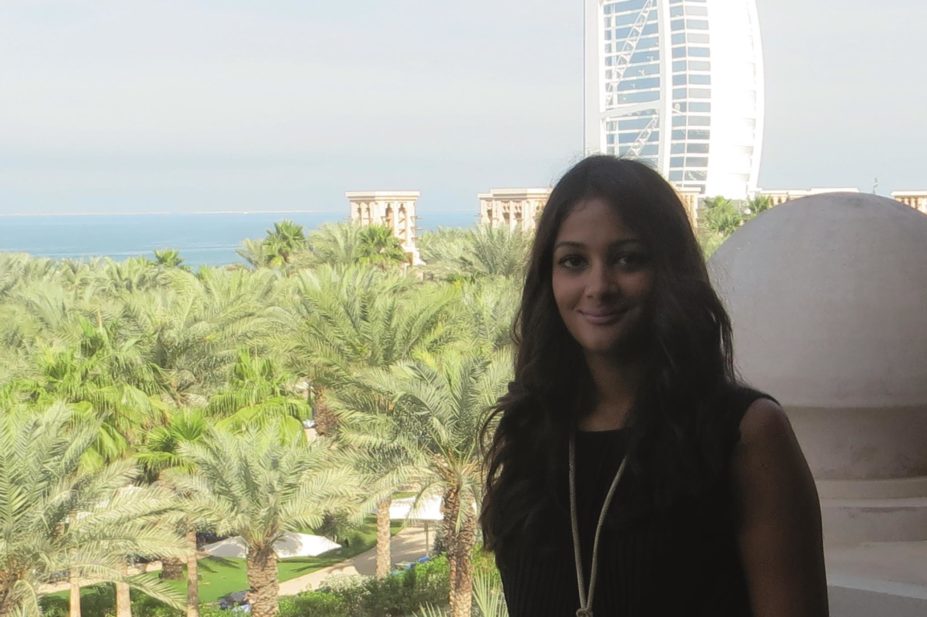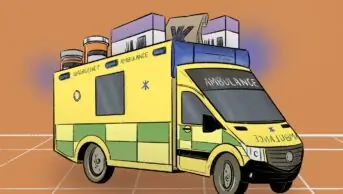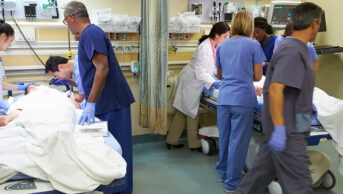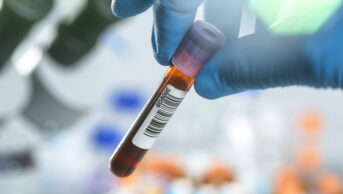
How did you end up working for National Ambulance in Abu Dhabi?
After I completed my pre-registration year and qualified as a pharmacist, I was accepted into a three-year residency programme at Oxford University Hospitals NHS Trust. Towards the end of my residency, I decided to move to Dubai in the United Arab Emirates (UAE) and start a new life with my fiancé, who was living there. When I started researching jobs, I realised that there were limited opportunities for a clinical pharmacist. After some months, however, I received a call from a recruitment company which was looking for a pharmacy manager in the National Ambulance service.
How does the National Ambulance service in Abu Dhabi operate?
National Ambulance is 80% owned by the government and 20% privately owned. It covers the whole of the Northern Emirates, so every resident who requires emergency services will contact us. We have a large contract with the Helicopter Emergency Medical Services, which provide pre-hospital care and rapid transportation for staff working and residing on oil and gas sites and rigs across the UAE. We also have contracts with particular hospitals and Etihad Airways, so all its staff use National Ambulance for emergency services.
Why did National Ambulance decide to hire a pharmacist?
Although there are other private ambulance services in the UAE, they are all attached to hospitals. When National Ambulance was founded in 2011, paramedics were not able to dispense medicines — their main role was to transport patients to hospitals or clinics. As the company acquired larger contracts, it found that paramedics needed to be able to administer medicines. The healthcare system in the UAE had not yet developed to accommodate full regulations for emergency services, which gave the company an opportunity to set a precedent. The chief medical adviser worked with the government to expand the paramedics’ roles and allow them to administer medicines under his supervision. In 2013, the company hired a pharmacist to supply and dispense the medicines.
What are your daily responsibilities?
My main role is to support the medicines requirements for all National Ambulance contracts. Currently we have 14 regular contracts, which involve more than 590 clinical staff across the country, and we attend 15–20 public and sporting events each week. I ensure the paramedics and emergency medical technicians have fully stocked medicines packs to cover their ambulance call volumes at all times. This means my most important daily activities focus on procurement of drugs and dispensing drugs packs for clinical staff.
How does this role differ from your previous pharmacy roles?
When I took this position, I knew I would have to sacrifice working directly with patients and I would miss the multidisciplinary feel of a ward environment. However, as I am currently the only pharmacist at National Ambulance, I am able to work independently and customise the service depending on what I consider most suitable for the company. In 2014, I developed and implemented the pharmacy services for the Formula 1 Grand Prix. I provided all the emergency medicines required for an international medical team of approximately 70 people who would treat the drivers, visitors and staff at the event, as well as setting up and providing medicines for a medical clinic within the Yas Marina Circuit in Abu Dhabi. I am constantly planning for new contracts to ensure I provide well structured and efficient pharmacy services.
What are the challenges you face?
The location for the contract with the largest turnover in drug usage is over 300km away from the pharmacy, and has ten ambulance stations and 204 clinical staff. The entire contract only receives a pharmacy delivery once a week so effective teamwork is essential to ensure that the correct quantity of new drug packs are supplied on time.
Another major issue in the Middle East is procurement of drugs. Many of our drugs have to be imported from other countries, which involves a lot of paperwork and import permits. Drugs can take up to six months to arrive so I have to be organised when placing orders in advance to cover our usual drug turnover, new contracts that may suddenly commence and medicines that are due to expire.
It can also be difficult to make decisions because I am currently the only member of the pharmacy team.
What are the future plans for the National Ambulance pharmacy?
Currently I operate out of a small pharmacy in the office headquarters; however, plans are in place for a much larger pharmacy to meet the company’s demands. I am designing this pharmacy, starting from construction of the room itself to the full interior layout. I am also in the process of hiring several new pharmacists to join the team. I now have full responsibility for the drug formulary and monographs that were previously managed by our education department. I am also working on pharmacy orientation training for doctors, paramedics and emergency medical technicians, including in-class learning, e-learning packages and drug calculation quizzes.


